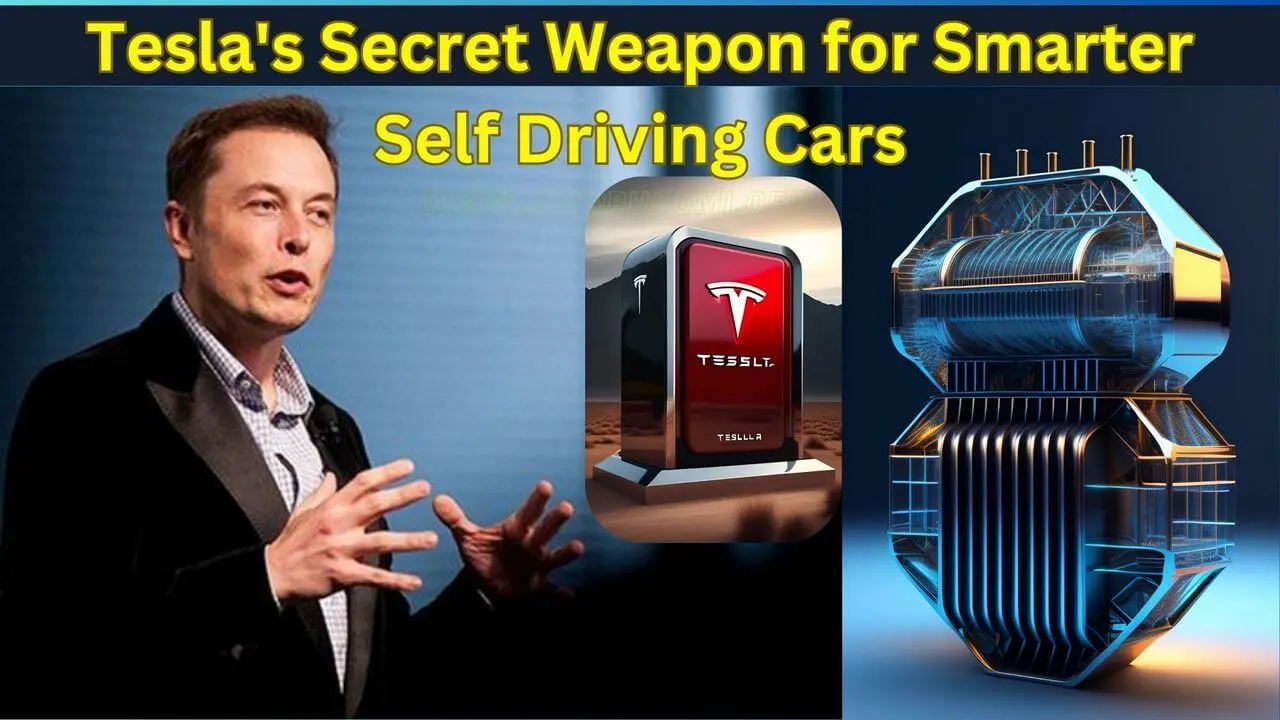Explore the powerful brain behind Tesla’s Dojo supercomputer, designed to empower self-driving cars and handle vast data streams. Discover how this innovation is shaping the future of autonomous driving.
Tesla’s Dojo Supercomputer
Imagine a supercomputer specially designed for Tesla’s cars, a powerful brain that helps them drive better. Tesla’s Dojo – a supercomputer specially crafted to transform the driving experience. In this article, we’ll dive into the fascinating world of Dojo, the supercomputer designed to revolutionize Tesla’s self-driving capabilities and handle the massive amounts of data generated by their vehicles.
The Need for Dojo Tesla
Tesla has big plans – they aim to create the most powerful supercomputer. Why? Because Tesla’s cars produce massive amounts of data, and they need a supercomputer to handle it all. This data plays a crucial role in making Tesla cars better and smarter. Elon Musk, Tesla’s CEO, has openly discussed this ambitious plan and is willing to invest up to $1 billion in this project, known as Project Dojo. The ultimate goal? To enhance the performance of their self-driving vehicles.
A Unique Approach
While other tech giants like Google, Microsoft, and Meta are considering using Nvidia’s supercomputers, Tesla has chosen a different path. They want to build their own supercomputer tailored to their unique needs. This represents a significant step for Tesla as they continue to grow and produce more cars.
What is a Dojo Super Computer?
Dojo is not your typical computer; it’s a specialized, super powerful machine designed to process vast amounts of video data generated by Tesla’s cars. Think of it as a dedicated brain for cars, helping them become even smarter and more capable of autonomous driving. Dojo stands out from other supercomputers because it’s specifically engineered to handle extensive video data, making it a perfect fit for Tesla’s needs.
The Technical Architecture of Dojo
At the heart of the Dojo supercomputer is the D1 chip, a creation of Tesla’s engineering team led by Ganesh Venkataramanan. This chip, manufactured by TSMC in Taiwan, is incredibly compact, measuring about 7 nanometers in size. However, don’t let its size fool you; it houses a staggering 50 billion transistors, akin to tiny switches that power the computer’s operations.
To further boost Dojo’s capabilities, Tesla plans to utilize exopods, special containers housing multiple D1 chips. Each D1 chip consists of 354 computing cores, akin to tiny workers within the chip. These cores work together in groups called “training tiles,” with approximately six training tiles forming a system tray. Multiple system trays are combined inside a cabinet, and an exopod houses ten cabinets, creating a powerhouse capable of processing an astonishing amount of data.
Dojo’s Computing Power
Before Dojo, Tesla’s computers relied on around 5,760 GPUs to perform their tasks. With the introduction of Dojo, they gained access to over 1.8 exaflops of computing power. This transformation is akin to having a super army of computers dedicated to making Tesla cars even smarter.
Key Components of the D1 Chip (Tesla Dojo chip)
The D1 chip comprises several key components that contribute to its immense computing power. These components include nodes, which function as small, highly efficient computers capable of various mathematical operations. They excel in tasks ranging from simple arithmetic to complex machine learning operations. Additionally, the chip employs DDR4 SDRAM memory for data storage, further enhancing its capabilities.

The D1 chip also features an instruction set, a set of rules that dictate its operations, ensuring efficient execution of tasks. This instruction set encompasses rules for both standard mathematical operations and more intricate calculations utilized in machine learning.
Simultaneous multi-threading is another vital feature of the D1 chip, enabling it to execute multiple tasks simultaneously. This capability enhances the chip’s speed and efficiency, making it a formidable computing force.
D1’s cores possess 1.25 megabytes of high-speed memory, facilitating rapid data access. Cores can also seamlessly share data, fostering effective collaboration.
Tesla’s Dojo Energy Consumption
All this computational power comes at a cost in terms of energy consumption. A single D1 chip can consume up to 400 watts during training. To keep these chips cool, Tesla employs water cooling technology, ensuring optimal performance.
The Power of Tesla Exopods
An exopod, with 120 tiles, is a computational juggernaut, capable of handling a mind-boggling 20 quintillion calculations per second. It’s like an army of supercomputers collaborating seamlessly to process data efficiently.
Tesla’s Dojo Software Framework
Dojo utilizes the PyTorch framework, which simplifies the programming process and is distinct from traditional high-performance computing languages like C or C++. This choice enhances efficiency in handling vast amounts of data.
Conclusion
In conclusion, Tesla’s Dojo supercomputer represents a significant milestone in the development of self-driving technology. Its exceptional computing power, innovative architecture, and unique approach to handling data make it a crucial component of Tesla’s vision for the future. As we look ahead to the ever-evolving landscape of autonomous vehicles, Dojo stands as a testament to Tesla’s commitment to innovation and excellence. What do you think of Tesla’s Dojo supercomputer? Share your thoughts in the comments below and subscribe for more exciting developments in technology.

